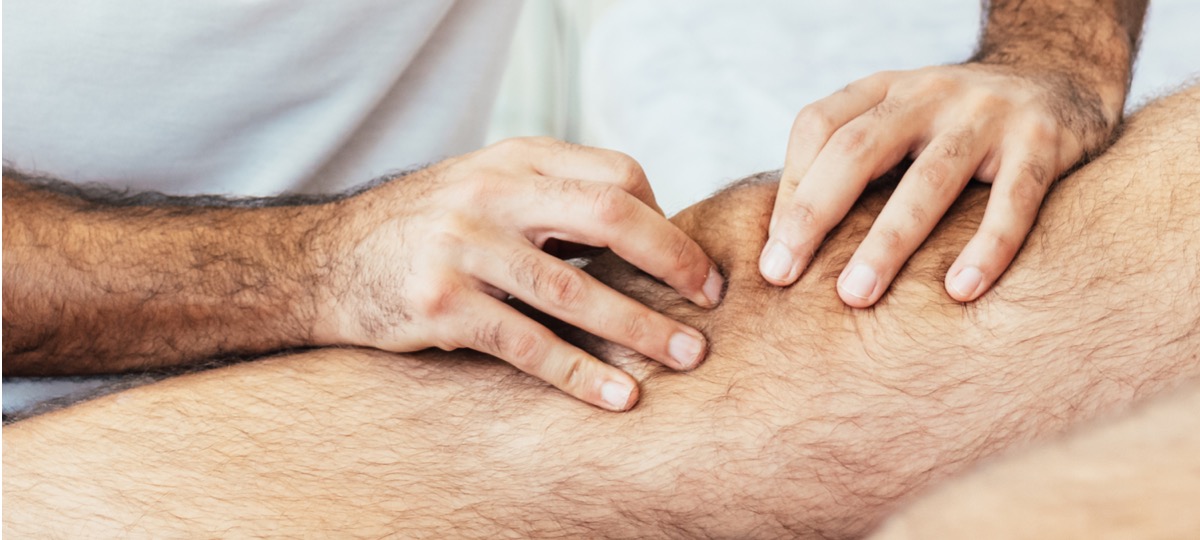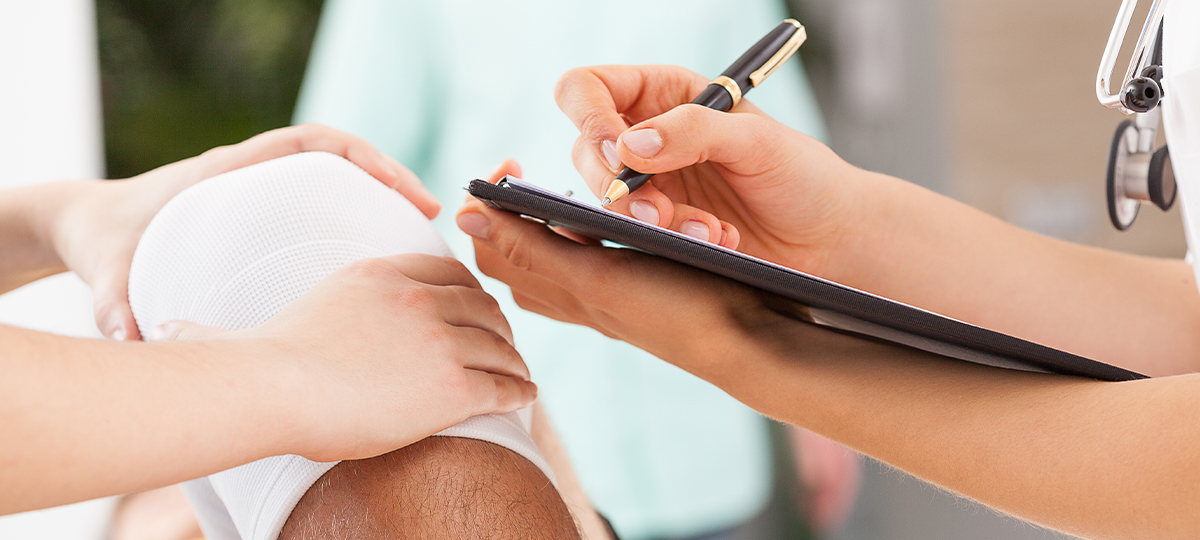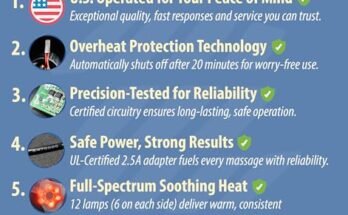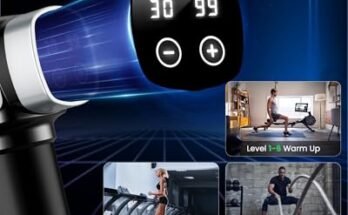Post-surgery massage techniques aid in reducing swelling, promoting circulation, and enhancing recovery. They include gentle lymphatic drainage, scar tissue mobilization, and myofascial release.
Post-surgery massage is an essential component of the healing process. These techniques help alleviate pain, minimize scar tissue formation, and improve mobility. Gentle lymphatic drainage reduces swelling by promoting fluid movement. Scar tissue mobilization prevents adhesions and keeps the tissue flexible.
Myofascial release targets muscle tightness and enhances blood flow. Incorporating these massage techniques can significantly speed up recovery and improve overall outcomes. Patients should consult with a certified massage therapist experienced in post-surgical care for best results. This ensures that the techniques used are safe and effective for their specific condition.

Credit: www.youtube.com
Introduction To Post-surgery Massage
Post-surgery massage is vital for recovery. It helps reduce pain and swelling. It also improves blood flow and flexibility. This guide introduces you to effective post-surgery massage techniques.
Benefits Of Massage
Post-surgery massage offers many benefits:
- Reduced Pain: Massage helps to relieve pain by relaxing muscles.
- Decreased Swelling: It helps drain excess fluids from the body.
- Improved Blood Flow: Better blood flow speeds up healing.
- Enhanced Flexibility: It reduces stiffness and improves movement.
- Scar Tissue Reduction: Massage helps to break down scar tissue.
Types Of Surgeries
| Surgery Type | Specific Massage Benefits |
|---|---|
| Orthopedic Surgeries | Reduces muscle stiffness and improves joint movement. |
| Abdominal Surgeries | Helps in reducing scar tissue formation. |
| Cardiac Surgeries | Enhances circulation and reduces chest wall tightness. |
| Plastic Surgeries | Minimizes swelling and improves skin texture. |
| Cancer Surgeries | Relieves pain and reduces stress. |
Preparing For Post-surgery Massage
Post-surgery massage can aid in recovery. It reduces pain, swelling, and scar tissue. Proper preparation ensures safety and effectiveness. Follow these steps to get ready.
Consulting Your Doctor
Always consult your doctor before starting post-surgery massage. They can advise on timing and techniques. Your doctor knows your medical history best. They can identify any risks associated with massage. Ask specific questions about your surgery and recovery.
Prepare a list of questions for your doctor. Include:
- When can I start massage therapy?
- Are there any areas to avoid?
- What type of massage is recommended?
Selecting A Qualified Therapist
Choose a qualified therapist experienced in post-surgery massage. Look for certifications and credentials. Ensure they understand your specific surgery and needs.
Use the following tips to find the right therapist:
- Check their qualifications and certifications.
- Read reviews and testimonials from other patients.
- Verify their experience with post-surgery massage.
A good therapist will:
- Communicate clearly and listen to your concerns.
- Provide a personalized massage plan.
- Monitor your progress and adjust techniques as needed.
Preparing for post-surgery massage involves careful planning. Consulting your doctor ensures safety. Selecting a qualified therapist ensures effectiveness. Follow these steps for a smooth recovery.
Lymphatic Drainage Techniques
Lymphatic drainage techniques can help speed up recovery after surgery. These techniques focus on reducing swelling and enhancing the body’s healing process. This section will explain how these techniques work and when to start them.
How It Works
Lymphatic drainage techniques use gentle, rhythmic movements. These movements stimulate the flow of lymph fluid. The lymph fluid helps remove waste and toxins from the body.
By increasing lymph flow, these techniques reduce swelling and inflammation. They also improve blood circulation, which speeds up healing.
Therapists use their hands to apply light pressure. They follow the natural flow of lymph fluid, which moves towards the heart.
When To Start
Start lymphatic drainage techniques after the initial healing phase. This is usually around one to two weeks post-surgery.
Consult your doctor before starting any massage therapy. Your doctor will ensure it is safe for your specific condition.
Begin with short sessions and gradually increase the duration. Listen to your body and adjust as needed.

Credit: www.amtamassage.org
Scar Tissue Management
Post-surgery massage techniques play a crucial role in scar tissue management. Effective management can improve healing and reduce discomfort. This section will explore methods to break down scar tissue and improve skin elasticity.
Breaking Down Scar Tissue
Scar tissue forms as the body heals after surgery. It can be thick and rigid, causing discomfort. Massage techniques help to break down this tissue.
- Cross-Fiber Friction: Use fingers to rub across the scar.
- Circular Massage: Use circular motions around the scar area.
- Myofascial Release: Apply gentle pressure to stretch the tissue.
Perform these techniques daily for best results. Always consult with a healthcare professional before starting.
Improving Skin Elasticity
Improving skin elasticity aids in reducing tightness and discomfort. Here are some techniques:
- Hydration: Drink plenty of water to keep skin hydrated.
- Moisturize: Use lotions or oils to keep the skin supple.
- Gentle Stretching: Perform light stretches to improve flexibility.
Consistent care helps the skin recover its elasticity over time.
| Technique | Description |
|---|---|
| Cross-Fiber Friction | Rub fingers across the scar to break down tissue. |
| Circular Massage | Use circular motions around the scar area. |
| Myofascial Release | Apply gentle pressure to stretch the tissue. |
| Hydration | Drink water to keep skin hydrated. |
| Moisturize | Use lotions or oils for supple skin. |
| Gentle Stretching | Perform light stretches to improve flexibility. |
Reducing Swelling And Inflammation
Post-surgery massage helps in reducing swelling and inflammation. Using the right techniques can speed up healing. Below are some effective methods.
Gentle Massage Techniques
Gentle massage is crucial post-surgery. It helps in draining fluids and reducing swelling. Use light, circular motions on the affected area. Avoid pressing too hard as it can cause pain.
- Use the pads of your fingers.
- Move in small, circular motions.
- Massage for 5-10 minutes, twice daily.
Always consult your doctor before starting any massage technique. This ensures safety and effectiveness.
Cold And Heat Applications
Cold and heat applications can also aid in reducing swelling. Alternate between cold and heat packs. This method is effective and easy to use.
| Application | Duration | Benefits |
|---|---|---|
| Cold Pack | 15-20 minutes | Reduces swelling and numbs pain |
| Heat Pack | 15-20 minutes | Relaxes muscles and improves blood flow |
Always wrap the pack in a cloth to avoid direct skin contact. This prevents burns or frostbite.
Follow these steps to help your body heal faster. Proper care ensures a smoother recovery.
Pain Management Strategies
Effective Pain Management Strategies after surgery are essential for a smooth recovery. Different massage techniques can help reduce pain and improve healing. Below, we’ll explore two key methods: Trigger Point Therapy and Acupressure Points.
Trigger Point Therapy
Trigger Point Therapy targets specific areas of muscle tightness. These spots are called trigger points. They can cause pain and discomfort. By applying pressure to these points, therapists can release tension. This reduces pain and improves movement. Trigger Point Therapy can be done with hands, elbows, or tools.
- Identify the trigger points.
- Apply steady pressure for 30-60 seconds.
- Massage in circular motions to release tension.
| Benefit | Description |
|---|---|
| Pain Relief | Reduces muscle pain and stiffness. |
| Improved Circulation | Increases blood flow to the area. |
| Enhanced Flexibility | Restores normal muscle function. |
Acupressure Points
Acupressure Points are specific spots on the body. These points help manage pain and promote healing. By pressing these points, the body’s energy flow is balanced. This can reduce post-surgery pain and speed up recovery.
- Locate the acupressure points related to the surgery area.
- Apply gentle pressure using fingers or a blunt object.
- Hold the pressure for about 1-2 minutes.
Here are some common acupressure points:
- LI4 (Hegu) – Between thumb and index finger.
- ST36 (Zusanli) – Below the kneecap.
- SP6 (Sanyinjiao) – Inside of the lower leg.
Both Trigger Point Therapy and Acupressure Points are effective strategies for managing pain after surgery. They can help you recover faster and feel better sooner.
Enhancing Mobility And Flexibility
Post-surgery massage techniques play a crucial role in recovery. They help in enhancing mobility and flexibility. This aids in a faster return to normal activities. Key techniques include range of motion exercises and stretching techniques.
Range Of Motion Exercises
Range of motion exercises are essential for joint flexibility. These exercises help in reducing stiffness and pain. They improve blood flow to the affected area.
- Passive Range of Motion: The therapist moves the limb for you.
- Active Range of Motion: You move the limb without assistance.
- Active-Assisted Range of Motion: You move the limb with some help.
Here is a simple routine:
- Start with gentle movements.
- Gradually increase the range and intensity.
- Repeat each movement 5-10 times.
Stretching Techniques
Stretching techniques help in maintaining flexibility. They prevent the muscles from becoming tight. This is crucial for post-surgery recovery.
Effective stretching techniques include:
- Static Stretching: Hold the stretch for 15-30 seconds.
- Dynamic Stretching: Move your limbs through their full range.
- PNF Stretching: Contract and relax the muscles during the stretch.
Follow these steps:
- Warm up before stretching.
- Stretch until you feel slight tension.
- Hold the stretch and breathe deeply.
These techniques not only improve mobility but also reduce the risk of complications. Implementing these methods ensures a smoother recovery journey.

Credit: www.amtamassage.org
Safety Tips And Precautions
Post-surgery massage can aid in faster recovery and pain relief. However, safety is paramount. Understanding the necessary precautions ensures a smooth healing process. Here are some essential tips to keep in mind.
Recognizing Red Flags
Being aware of potential issues is crucial for a safe recovery. Watch for these red flags:
- Increased Pain: If pain intensifies during or after the massage, stop immediately.
- Swelling: Notice any unusual swelling around the surgery area? This could indicate a problem.
- Infection Signs: Redness, warmth, or discharge at the incision site needs medical attention.
- Fever: A fever might signal an infection. Seek medical advice promptly.
Personalized Massage Plans
Every patient is different. Tailoring the massage plan ensures optimal recovery. Here are steps to create a personalized plan:
- Consult Your Doctor: Always get approval before starting any massage therapy.
- Assess Your Condition: Understand your specific post-surgery needs and limitations.
- Choose the Right Technique: Techniques like lymphatic drainage or gentle stroking may be recommended.
- Monitor Progress: Regularly evaluate your recovery and adjust the plan as needed.
| Technique | Benefits | Precautions |
|---|---|---|
| Lymphatic Drainage | Reduces swelling, boosts healing | Avoid if infection is present |
| Gentle Stroking | Enhances circulation, relieves pain | Use light pressure only |
| Scar Tissue Massage | Improves flexibility, reduces scar tissue | Wait until the incision is fully healed |
Integrating Massage With Other Therapies
Post surgery, the body needs extra care to heal properly. Integrating massage with other therapies can enhance recovery. Combining different treatments can speed up the healing process.
Physical Therapy
Physical therapy is crucial for restoring movement and strength. Adding massage to physical therapy can reduce muscle tension. This helps in improving flexibility and range of motion.
- Massage reduces scar tissue formation.
- It helps in pain management.
- Combining both can improve blood circulation.
Massage can also prepare muscles for physical exercises. This makes the therapy more effective. Patients often feel less pain and stiffness.
Nutritional Support
Nutrition plays a vital role in recovery. Proper diet supports tissue repair and energy levels. Combining massage with nutritional support can yield better results.
| Nutrient | Benefit |
|---|---|
| Protein | Helps in tissue repair |
| Vitamin C | Boosts collagen production |
| Omega-3 | Reduces inflammation |
Massage aids in better digestion and absorption of nutrients. This ensures that the body gets the required nutrients for healing. A well-balanced diet combined with massage enhances overall recovery.
Long-term Benefits Of Post-surgery Massage
Post-surgery massage offers numerous long-term benefits. These benefits extend beyond immediate recovery. Regular massage helps in various ways, ensuring a smoother healing process. Below, we explore these benefits in detail.
Sustaining Recovery
Regular post-surgery massage helps sustain recovery. It reduces scar tissue formation. This keeps the affected area flexible and mobile.
- Improved circulation: Massage boosts blood flow, aiding in nutrient delivery.
- Pain management: It helps in reducing pain and discomfort.
- Scar tissue reduction: Massage techniques minimize scar development.
Patients often experience better range of motion. This enables them to return to daily activities faster.
Boosting Overall Health
Post-surgery massage also boosts overall health. It positively impacts the body’s systems.
| Benefit | Impact |
|---|---|
| Improved immunity | Massage boosts the immune system, reducing infection risk. |
| Better mental health | Massage reduces stress and anxiety levels. |
| Enhanced sleep quality | Patients sleep better, aiding overall recovery. |
These benefits extend beyond the healing period. Patients report long-term wellness improvements.
Frequently Asked Questions
What Type Of Massage Is Good After Surgery?
Lymphatic drainage massage is beneficial after surgery. It reduces swelling, improves circulation, and promotes healing. Always consult your doctor first.
How Soon After Surgery Should I Massage?
You can usually start massaging around 2 weeks after surgery. Always consult your surgeon first for personalized advice.
Is It Ok To Massage Legs After Surgery?
Consult your doctor before massaging legs post-surgery. It may help with circulation but can also risk complications.
How Many Massages Should You Get After Surgery?
You should typically get 5-10 lymphatic drainage massages after surgery. Consult your surgeon for personalized advice.
Conclusion
Post-surgery massage techniques aid in faster recovery and enhance overall well-being. These methods reduce pain and improve mobility. Always consult a professional therapist for best results. Incorporating these massages into your routine can significantly improve your healing process. Remember, proper care is essential for a smooth recovery journey.



